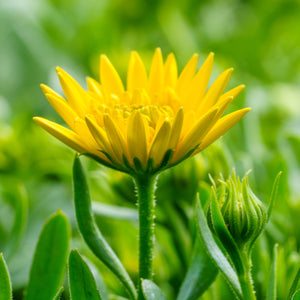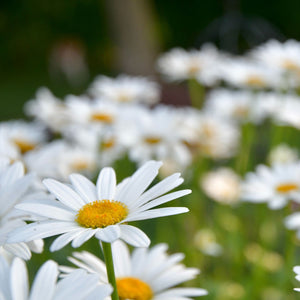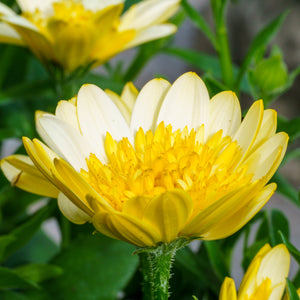
The Arguement for Spring Planting
The world’s great debates: The chicken or the egg? Is the world flat? Lebron or Michael? In the world of horticulture, we debate spring vs. fall planting. Let's take a look at the facts and see if we can settle this debate for good.

The Water Factor
Any newly installed plant needs adequate water, likely more than you think it needs. When planting in the spring you get the benefit of natural moisture from rain. Spring showers, plus your home irrigation system, should give your new plants the water needed to survive their first few months.
Natural moisture in the fall is much less common. If we're being honest, we probably don't pay as much attention to watering our landscape in the fall either.
Further, as temperatures plummet in the fall, plants struggle to take-up enough moisture. When this happens they're susceptible to damage or total loss. This is especially true when a plant hasn't had adequate time to establish itself.
From a watering perspective, install your new plants in the spring.
Spring: 1 - Fall: 0

Time Required To Take Root
As important is the amount of time available for the plant to establish its root system. Warm temperatures help the plant establish a healthy root system. When planted in spring, new plants have months to establish the roots needed to survive a harsh winter. When planted in fall, they could have mere weeks. Time is your friend in this situation, so we feel it's better to play the long game.
Further, we know for sure that broadleaved evergreens such as skip laurel, leucothoe and holly don't have adequate time to root when planted in fall.
When planted in spring, plants have adequate time to establish the healthy root system that's essential to their future.
Spring: 2 - Fall: 0

Availability
When all else fails, defer to professional opinion. Many industry professionals flat out refuse to plant certain species deemed "fall hazards". Species such as Red oak, White oak, River birch and cherry all have questionable survivability when planted in the fall. As a result, you'll have a much longer list of options to choose from when planting in the spring.
When in doubt, do as the professionals do.
Spring: 3 - Fall: 0

Heat
Many would argue summer heat hurts plants installed in the spring. With any plant, new or established, the antidote is water. If the plant has adequate water they're capable of surviving even the most extreme heat. Considering new plants need adequate water anyway, we consider this a moot argument.
In the spirit of fairness, fall plantings likely won't deal with extreme heat. Ample watering should offset heat's damage, however, so we'll call this round a draw.
Spring: 3.5 - Fall: .5
Conclusion
Of course there are many who successfully plant in the fall. They could probably write a similar piece to justify why they feel fall is the best time for new planting. Follow proper protocols and more often than not your landscape will thrive, regardless of the season you plant.
If you’re asking us, we’ll plant in the spring.
Perfect Plants for Early Spring
Sold Out
Sold Out
Sold Out
Sold Out





